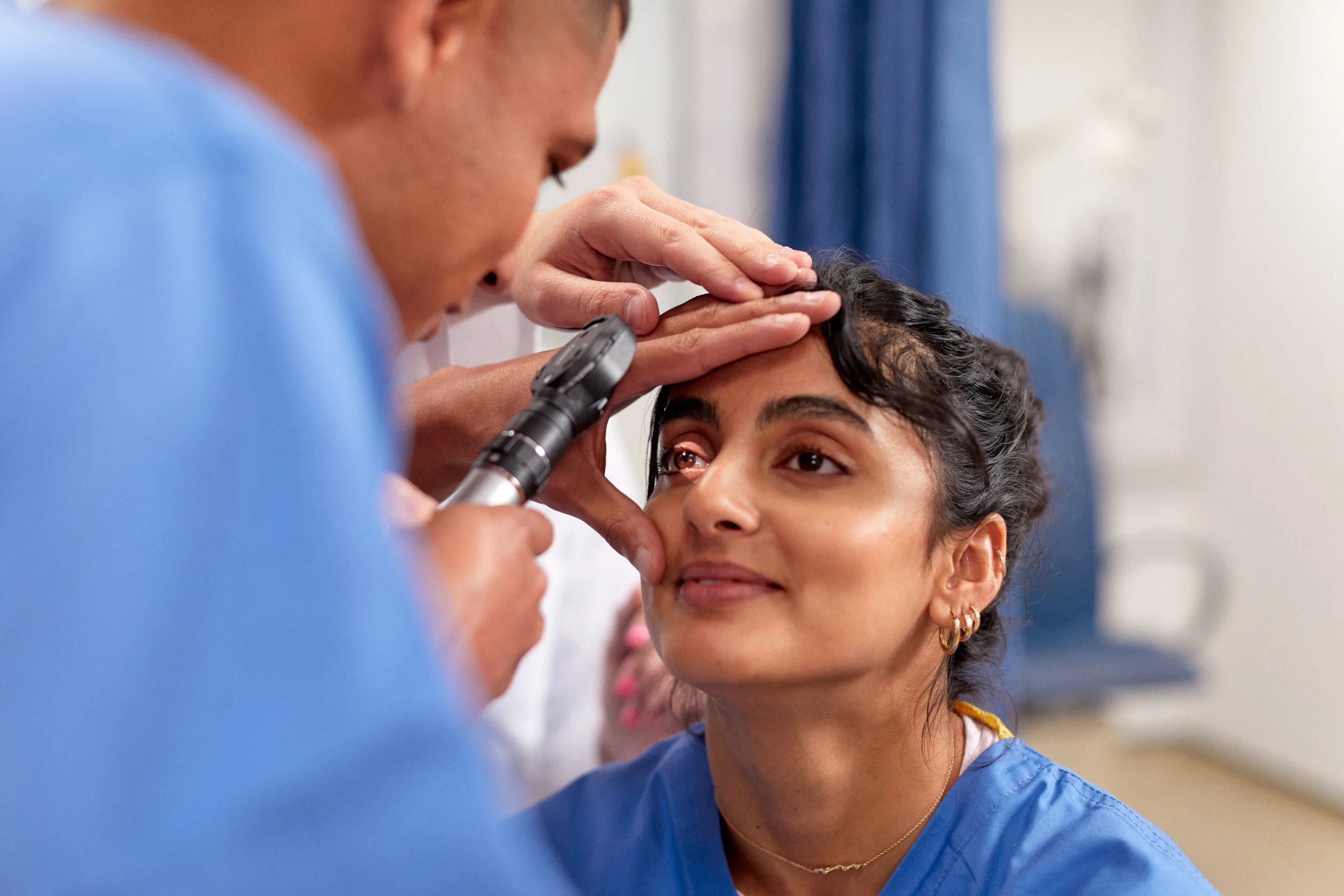
Get a Hand on Ergonomics for Ophthalmologists & Optometrists

You should never underestimate the importance of ergonomics for ophthalmologists and optometrists. The most common optometry equipment lifted during surgery or an exam may not weigh more than 500 g, which isn’t enough to put you at risk for musculoskeletal disorders that may come to mind when you think about medical injuries. However, the lack of ergonomics for ophthalmologist and optometrists are causing practitioners to suffer. Let’s take a closer look at the role of ergonomics for ophthalmologists and optometrists as well as a few steps you can take to improve your optometry practice while staying healthier.
The 3 Ps of Ergonomics for Ophthalmologists & Optometrists
When it comes to optimizing ergonomics for ophthalmologists and optometrists, a few relatively small adjustments can go a very long way to prevent problems later down the road. In fact, strategies of prevention are critical to avoiding and even healing wear and tear on the soft tissue in your body that can easily lead to injury. After all, it’s far too easy to ignore seemingly minor inconveniences like a sore back or a sore neck until it grows into a much more serious problem, resulting in lost income and missed days from work. According to AAO, the three Ps of ergonomics play a major role in keeping you and your staff healthy. The three Ps of ergonomics for ophthalmologists and optometrists include:
- The positioning of yourself,
- Your posture, and
- The positioning of the patient
The Ergonomics for Ophthalmologists & Optometrists for Slit Lamps
While many pieces of ophthalmic equipment were not designed with ergonomics in mind, all of Keeler’s instrumentation was created for the most comfortable experience. Here are a few tips you can use whenever using one of the most common tools in optometry — the slit lamp.
Avoid Putting Weight on Your Elbows
Several eye practitioners rest their elbows on the table to help steady the hand. Over a period of time, the continual pressure on your elbow —which isn’t designed to be weight bearing —can cause tingling and numbness. If you’re experiencing this uncomfortable sensation, you may have nerve damage.
Keep Your Slit Lamp Close
Another common tip is to bring the type of slit lamp closer to you and increase your reach by narrowing or shortening the slit lamp table. Instead of having a bent wrist, sitting more erect may help your wrist remain in a more neutral position when using the slit lamp controls.
Clinical Ergonomics for Ophthalmologists & Optometrists
When it comes to clinical ergonomics, you can use the following tips to enhance the safety as well as comfortability of your practice.
Position Yourself Directly in Front of the Patient
At the beginning of an examination, take a few seconds to position yourself in front of the patient. You can avoid having to reach during the exam by getting your exam stool wheels underneath the footrest of the patient.
Alternate the Setup of Different Exam Rooms
You should always pay special attention to the setup of your clinic. In most practices, you can go from exam room to exam room and most equipment will be consistently located on the same side of every room. While this may be comfortable, this results in the continual stressing of a single side of your body. However, you can alternate the equipment and seating in exam rooms, so you aren’t continually leaning in the exact same way. In the beginning, it can feel slightly awkward to use exam rooms where you’re forced to lean alternating ways, but you can train yourself to vary positions.
Posture Starts at the Pelvis
As a physician, you’ll continually perform a range of functions and examinations seated on a stool. While the stool is very common across the medical field, it results in unsupported sitting. Whatever style of stool you choose, it’s critical to remember posture starts at your pelvis. You can potentially enhance your posture by choosing stool models where the seat tilts back and forward.
Office Ergonomics for Ophthalmologists & Optometrists
We get it — if you had it your way, you would spend far less time on a computer or paperwork and more time helping your patients see the world more clearly. Yet, this isn’t the reality for today’s eye care practitioners. And when you’re sitting to do paperwork or in front of a computer, make sure to use the following office ergonomics for ophthalmologists and optometrists to promote good posture:
- If you use a phone a lot, avoid cradling it and consider using a headset.
- When at your desk, sit as far back in your chair as possible.
- Keep our feet flat on the floor with your knees level with your hips.
- If you use a laptop, invest in a stand.
- Make sure to keep all screens just above your eye level when seated. You can also consider using or implementing standing desks in your office.
- You’re armrests are critical. Adjust the height of your armrest to a position where your shoulders are at rest.
- Whenever possible, take time to stretch throughout the day. For instance, using a hip flexor stretch has been proven to reduce pain associated with extensive sitting.
Contact Keeler for Ergonomic Ophthalmic Equipment
For more than 100 years, Keeler Ophthalmic Instruments has been producing cutting-edge instrumentation. Our devices are carefully crafted and created with you— the end user —in mind. We’ve continually refined and innovated our equipment to help you deliver exceptional results with unparalleled comfort. Contact Keeler Ophthalmic Instruments today for the best instrumentation.




